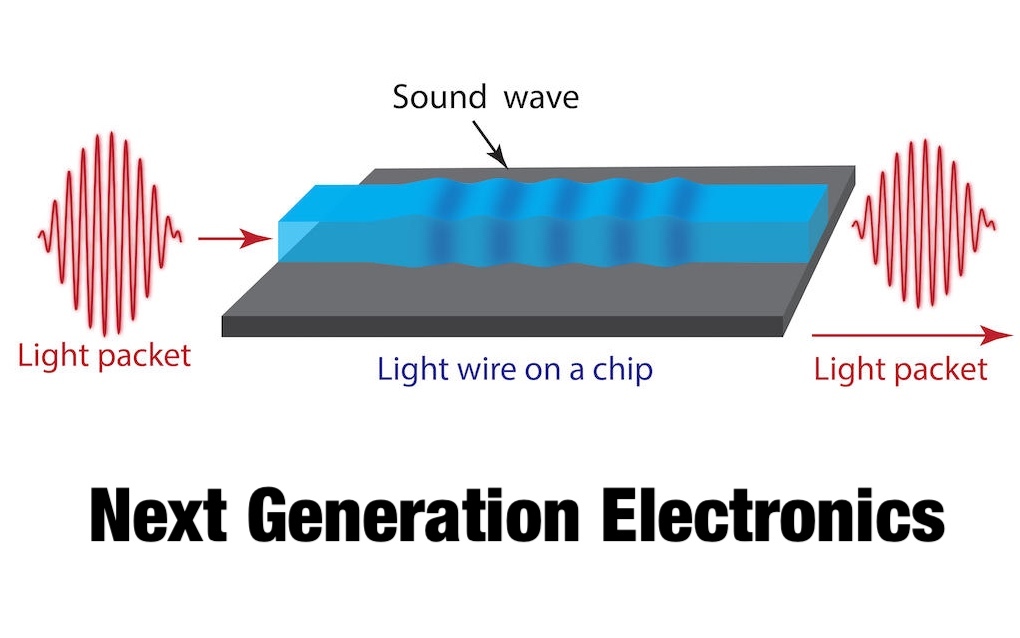- in Production by Bobby Owsinski
The Next Generation Of Electronics Will Be Based On Sound

All modern electronics are based on Integrated Circuits, or ICs, that package individual electronic components like transistors, resistors and capacitors onto tiny silicon chips. It’s what makes our audio world go round, as well as telecommunications and even new household appliances. The first generation of micro-electronics was based on electricity, the second on light, but the third looks like it will be based on sound.
Electronic transmission based on light was a huge advancement in the way we move data around. It made for far faster communication along with larger packets of data. There are problems with optics that make it difficult to get much better than it is right now however.
The energy of the lightwaves bouncing around inside the silica fibers create tiny vibrations that lead to feedback packets of sound or acoustic waves known as “phonons.” This feedback causes light to disperse, a phenomenon known as “Brillouin scattering,” which causes the light to lose some of its energy.
But sound may be the answer to this phenomena, according to the Sydney Nanoscience Hub and the School of Physics, the leader in this third wave of electronics with over 70 papers on the subject. Actually, it’s a combination of sound and light on a very small scale that could cause a revolution across multiple technologies.
One of the ways that next generation electronics sound-aided electronics could be a benefit to manufacturers is lessening the heat generated on a chip, which means that they could be made much smaller than even what we have today, which would be a huge boon to navigation systems used in aerospace.
Various militaries and military industrial companies like Boeing and Lockheed are now working with Sydney Nano to bring this next generation to fruition, so it might be closer than you think.
When it will reach down into the audio industry is anyone’s guess, but it’s rather appropriate that an electronic component based on sound could be helping to create and manage it as well.
There’s a more in-depth overview here.

